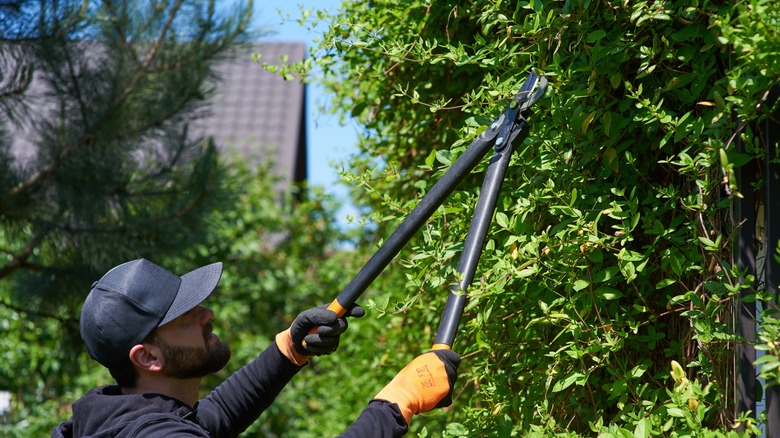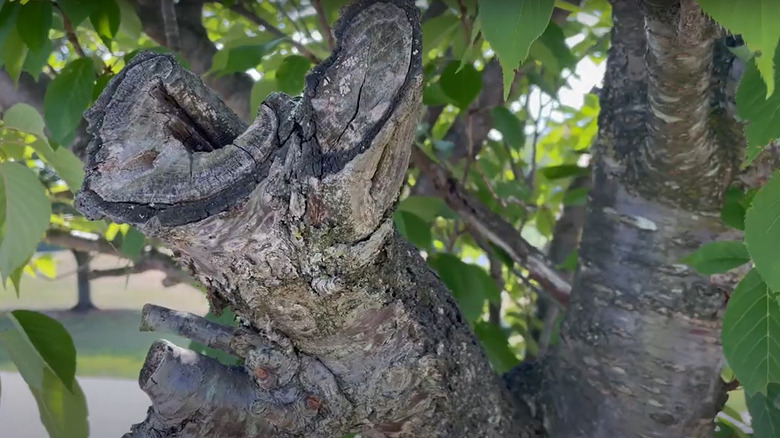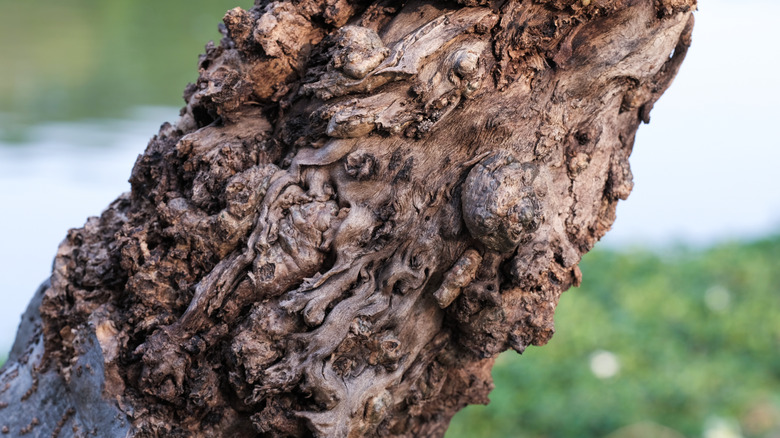The Common Trimming Practice That's Actually Killing Your Trees
It's hard not to appreciate the beautiful tree specimens lining our yards and neighborhoods. They shade our homes from the intense summer heat, purify the air we breathe, add wildlife value by embracing birds and pollinators, and raise our estate's worth by up to 7% (via PennState Extension). But if they grow too tall, they may become a nuisance by blocking our (or our neighbor's) view, overshadowing solar panels, or conflicting with overhead utilities. Some homeowners also believe that trees that grow super tall are more prone to toppling over or experiencing branch breaks, especially after windstorms. Irrespective of the reason, it's true that such trees are due for a haircut. Unfortunately, though, "topping" them and calling it a day is not the right approach.
Having no regard for the tree's structural integrity, topping entails arbitrarily cutting a tree's top branches down to stubs and defoliating the canopy as an easy means of height reduction. Doing so leaves the tree bereft of a decent lateral branch to take over the now-vacant terminal position, kickstarting a fight for dominance (and food), with the tree dying without declaring a winner. Some alleged tree care professionals running about with a chainsaw in a pickup truck also call the act stubbing, dehorning, hat-racking, lopping, or rounding over.
Topped trees don't survive for long
As topped trees lose 50% to 100% of their food-producing leafy crown, they're forced to enter survival mode. This means they use the food stocks stashed away in their bark, roots, and remaining branches since there aren't many photosynthesizing leaves on the tree. Usually, this stress alone is enough to kill the tree in a few years, especially if it isn't in top health. Indeed, oaks, beeches, and maples are unlikely to recover from topping.
But even if a tree manages to refoliate by quickly activating its dormant buds and putting out a growth spurt, it's unlikely to regain its former health. The reason? Unlike the old shoots that grew from thicker, overlapping branch collars, the new growth, or "water sprouts," are secured weakly into the outer tissue layers. Moreover, they come out tender, albeit in hordes (resembling a broom), in under two years, making the tree top-heavy. Ironically, this intensifies the likelihood of limb failure, defeating the purpose of topping the tree.
To make matters worse, the act counts as negligence, making you liable for hefty punitive and actual damages if your not-so-friendly neighbor presses charges in court over the broken branches landing in their territory. Plus, your maintenance costs can skyrocket since the branches keep growing vigorously. This necessitates routine pruning until the tree dies out, at which point you'll need to pay tree removal costs.
Topped trees invite in rot, insects, and diseases
Generally, a correctly pruned tree can heal its wounds by callusing over, but a topped tree cannot. While the offended tree will certainly try to cordon off its cut stubs, accomplishing the same for multiple wounds simultaneously is difficult, given the impaired energy-generating capacity. As a result, decay and fungi gain entry into the tree, rotting it from the inside out. Unfortunately, wound dressing is no help at this time. Moreover, the signals broadcasted by trees during their healing process work as magnets for some disease-causing microbes and insects, resulting in fire blight or other issues.
To boot, the sudden crown defoliation exposes the underlying branches and trunk to copious amounts of heat and light, causing sunscald. This leads to the premature death of the lower branches while triggering splits or cankers in bark tissues, weakening the tree permanently. Topping also disfigures trees, especially those of the evergreen variety. This is because their tops include the "apical meristem," which contains a hormone responsible for depressing side branches, thereby maintaining their pyramidal shape. But when the crown is gone, so is the apical effect, resulting in rounded trees that have difficulty casting off accumulated snow. What's worse, the tree may even split right down its center. To avoid such an outcome, stick to structurally pruning your tree the right way or hire a certified arborist to remove the tree if the height is a concern.


